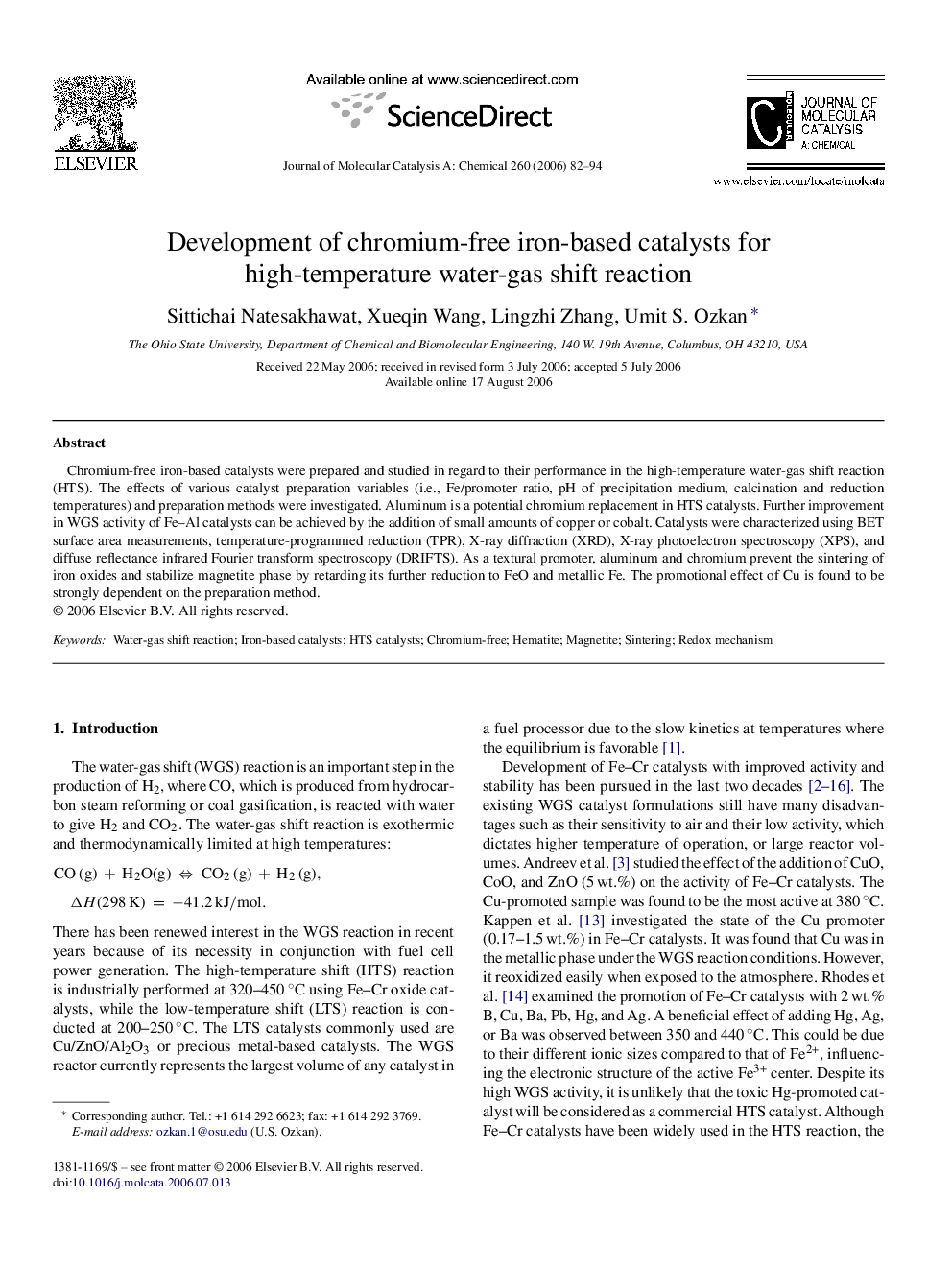| کد مقاله | کد نشریه | سال انتشار | مقاله انگلیسی | نسخه تمام متن |
|---|---|---|---|---|
| 68332 | 48512 | 2006 | 13 صفحه PDF | دانلود رایگان |

Chromium-free iron-based catalysts were prepared and studied in regard to their performance in the high-temperature water-gas shift reaction (HTS). The effects of various catalyst preparation variables (i.e., Fe/promoter ratio, pH of precipitation medium, calcination and reduction temperatures) and preparation methods were investigated. Aluminum is a potential chromium replacement in HTS catalysts. Further improvement in WGS activity of Fe–Al catalysts can be achieved by the addition of small amounts of copper or cobalt. Catalysts were characterized using BET surface area measurements, temperature-programmed reduction (TPR), X-ray diffraction (XRD), X-ray photoelectron spectroscopy (XPS), and diffuse reflectance infrared Fourier transform spectroscopy (DRIFTS). As a textural promoter, aluminum and chromium prevent the sintering of iron oxides and stabilize magnetite phase by retarding its further reduction to FeO and metallic Fe. The promotional effect of Cu is found to be strongly dependent on the preparation method.
Chromium-free iron-based catalysts were prepared and studied in regard to their performance in the high-temperature water-gas shift reaction (HTS). Use of textural and structural promoters was investigated. The figure shows the evolution of different phases in Fe–Al catalyst during the temperature-programmed reduction through use of in situ XRD technique. Figure optionsDownload as PowerPoint slide
Journal: Journal of Molecular Catalysis A: Chemical - Volume 260, Issues 1–2, 15 December 2006, Pages 82–94